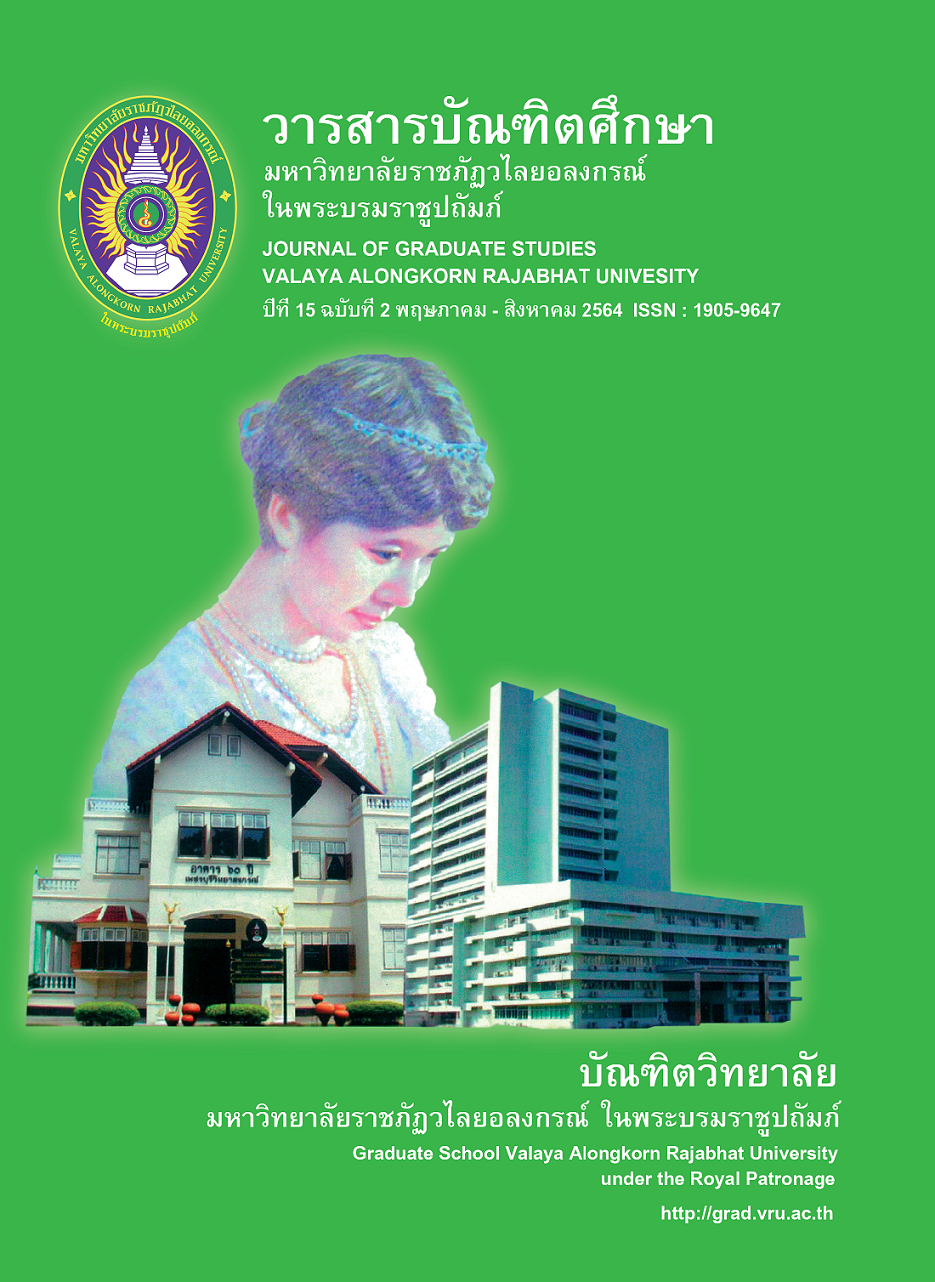MANAGEMENT OF LION DANCE AND CREATE THAI- CHINESE NETWORK CULTURE TO PROMOTE CREATIVE TOURISM
Main Article Content
Abstract
This paper serves for 1) studying the systems and methods in managing Thonburi Lion Dance Group, 2) studying the methods in managing the group in order to promote tourism efficiently, and 3) creating networks for the group and encouraging tourist active participation in all tourism activities. This research used qualitative research methods. By interviewing and discussing with the group of 19 lion dance representatives and stakeholders such as community leaders in Thonburi area. There was a study trip, training and networking meetings.
The research was found that: 1) There are 3 types of lion dance management systems in the Thonburi area: (1) Family system (2) School system (3) Community system but most 80% are family systems. 2) The 7M management concept is appropriate and consistent with the context of the Lion dance, consisting of (1) Man (2) Money (3) Management (4) Message (5) Manifest (6) Mediation (7) Measurement. and 3) The Lion dance network has 4 levels, which are as follows: 1) the network between the lion dance group (2) the network between similar professional groups, such as Chinese opera or magic group (3) National or domestic networks such as company organizer or government agencies (4) International network such as lion dance group compete or perform with lions dance group in Malaysia or Singapore.
Article Details

This work is licensed under a Creative Commons Attribution-NonCommercial-NoDerivatives 4.0 International License.
บทความทุกเรื่องได้รับการตรวจความถูกต้องทางวิชาการโดยผู้ทรงคุณวุฒิ ทรรศนะและข้อคิดเห็นในบทความ Journal of Global of Perspectives in Humanities and Social Sciences (J-GPHSS) มิใช่เป็นทรรศนะและความคิดของผู้จัดทำจึงมิใช่ความรับผิดชอบของบัณฑิตวิทยาลัย มหาวิทยาลัยราชภัฏวไลยอลงกรณ์ ในพระบรมราชูปถัมภ์ กองบรรณาธิการไม่สงวนสิทธิ์การคัดลอก แต่ให้อ้างอิงแหล่งที่มา
References
Aphakaro, P. (2004). khrư̄akhāi: thammachāt khwāmrū læ kānčhatkān [Networks: Nature, Knowledge and Management]. Bangkok: khrōngkān sœ̄msāng kānrīanrū phư̄a chumchon pensuk.
Barontini, R., & Caprio, L. (2006). The effect of family control confirm value and performance. European Financial Management, 12(5), 689-723.
Beven, K. (2006). On undermining the science? Hydro Processes. (20) 3141-3146.
Chareonwongsak, K. (2003). kānčhatkān khrư̄akhāi: konlayut samkhan sū khwāmsamret khō̜ng kān patirūp kānsưksā [Network management: a key strategy for the success of Education reform]. Bangkok: Success Media Co.,Ltd.
Chrisman, J. J., Chua, J., & Steier, L. (2002). The influence of national culture and family involvement on entrepreneurial per-ceptions and performance at the state level. Entrepreneurship Theory and Practice, 26(4), 113-130.
Dyer, W. G. (1986). Cultural change in family firms: Anticipating and managing Business and family transitions. San Francisco: Jossey-Bass.
Habbershon, T. G., Williams, M., & MacMillan, I. C. (2003). A unified systems perspective of family firm performance. Journal of Business Venturing, 18(4), 451-465.
Phonsee, S. (2007). khrư̄akhāi kān rīan rū nai ngān phatthanā chumchon [Network of learning in community development work]. Bangkok: Odean Store.
Phongphit, S. (2005). khrư̄akhāi: yutthawithī phư̄a prachākhom khemkhon chumchon khemkhæng [Network: Intense Community Tactics Strong community]. Bangkok.
Somdetkromphrayadamrongrachanuphap Riapriang. (1988). hongsāwadān čhaophrayāthiphākwong (kham Bunnag) Songtrūat chamralæsong phraniphonʻathibāiphimkhrangthī 6. Bangkok: ō̜ngwannakhadī læprawatsāt Kromsinpāk. Sahaphanwūsūhǣngprathētthai [Chronicles of Chao Phraya Tipakornwong (Kham Bunnak) His Highness examined and explaining writing, 6th edition, Bangkok, Literature Division And the history of the Fine Arts Department]. Retrieved from http://www.sat.or.th.
Stichweh, R. (2011). Systems Theory (International Encyclopedia of Political Science). Retrieved from https://www.researchgate.net/publication/297163438.
Scott. (1992). Organizations: Rational, Natural and Open Systems. New Jersey Prentice Hall.
Sanguannam, C. (2002). thritsadī nǣo patibatkān bō̜rihān sathān sưksā [Theory of educational institution administration]. Bangkok: Book Point.
Viphatphumiprathes, T. (2015). Kānchœ̄tsinghatow: Kānsadǣngnaiwatthanathamčhīnlækīlāradap Nānāchāt [Lion Dance: A Performance in a Traditional Chinese Culture and an International Sports Competition]. Retrieved from https://arts.dpu.ac.th/media/research/Lion%20Dance.pdf.
Wattanaboonya, P. (2018). Thonburi’s Permoning Art in The 21 th Century. Bansomdejchaopraya Rajabhat University (Supported from National Research Council of Thailand. Bangkok.
Wiruchnipawan, W. (2012). kānbō̜rihān čhatkān læ kānbō̜rihān yutthasāt khō̜ng nūaingān khō̜ng rat [Management and strategic administration of government agencies]. Bangkok: For S.


